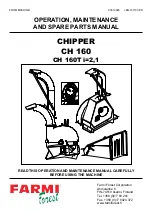
1592006230 XB590L GB r1.0 29.02.2016
XB590L
14/32
7.4 CHILLING CYCLE EXAMPLE
The following drawing explains how a Blast Chiller cycle can be done. To simplify, the use of only one insertion
probe is shown.
iS1
iS2
iS3
0
-5
-10
-15
-20
-25
-30
5
10
15
20
FIRST PHASE:
HARD CHILL
2 PHASE
SOFT CHILL
3 PHASE
FREEZING CYCLE
rS2
rS1
rS3
Time
Temper.
°C
Insert probe
Room Probe
7.4.1
First phase: “Hard chill”
It is usually used to blast chill food just cooked.
It is normally used to fast chill hot foods. E.g. from 80°C / 170°F to 20°C / 70°F
During “
Hard Chill
”, both compressor and fan are always on until the
rS1
temperature is reached. At this
point compressor is turned on end off so as to keep the temperature of the room at the
rS1
value. “Hard
Chill” ends when the temperature measured by the 3 insert probes reach the
iS1
value.
7.4.2
Second phase: “Soft chill”
The
Soft Chill
starts when the Hard Chill ends. It is used to prevent thin layer of ice from forming on the
product. The Soft Chill lasts until the temperature measured by the 3 insert probes reach the set point
iS2.
During Soft Chill the temperature of the room is regulated by the ambient probe with the set point
rS2.
7.4.3
Third phase: “Freezing cycle”
Freezing Cycle: used to fast freeze foods.
The Freezing Cycle starts when the Soft Chill ends. During the “Freezing Cycle” both compressor and fan
are always on until the
rS3
temperature is reached. At this point compressor and fans are turned on end
off so as to keep the temperature of the room at the
rS3
value (normally some degrees below
iS3)
.
Freezing Cycle ends when the temperature measured by the 3 insert probes reach the
iS3
value
.















































